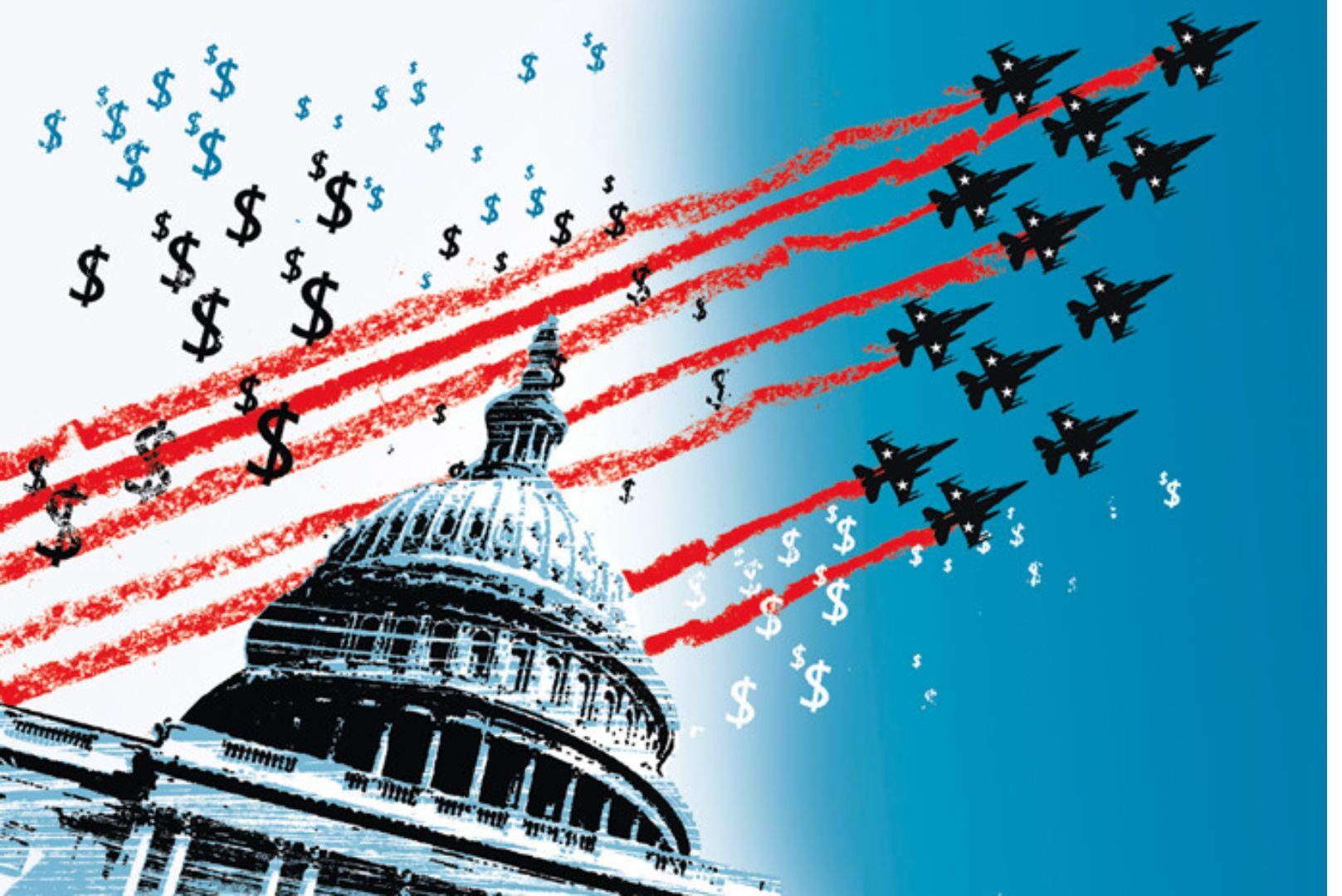In recent years, the military-industrial complex has continued to thrive, driven by ongoing conflicts in the Middle East, rising tensions with Russia and China, and the global war on terrorism.
The American military-industrial complex, a term popularized by President Dwight D. Eisenhower in his farewell address in 1961, refers to the synergistic relationship between a nation’s armed forces, its defence industry, and its political establishment. This complex has played a pivotal role in shaping US foreign policy and military strategy, leading to extensive global influence and numerous conflicts over the past century. While wars undoubtedly bring immense destruction and suffering, they have also generated substantial profits for certain American entities, fuelling a cycle of conflict and economic gain. The roots of the American military-industrial complex can be traced back to World War II. The massive mobilization of resources for the war effort transformed the US into a leading military power, with a robust defence industry emerging to meet the demands of the global conflict. Companies like Boeing, Lockheed Martin, and General Dynamics became integral to the war effort, producing aircraft, ships, and weapons on an unprecedented scale.
Post-World War II, the geopolitical landscape underwent significant changes. The Cold War between the United States and the Soviet Union necessitated a perpetual state of military readiness, leading to sustained government investment in defence. This period saw the establishment of a permanent arms industry and the proliferation of defence contractors, further entrenching the military-industrial complex in the American economy and politics. Initially, America’s imperial ambitions were confined to the Western Hemisphere, but the aftermath of World War II saw a dramatic shift. The US emerged as a superpower with global responsibilities and interests, often justified by the need to contain communism. This new role required maintaining and expanding military bases worldwide, ensuring a constant state of preparedness.
The Korean War (1950-1953) was one of the first significant conflicts of the Cold War era, where the US engaged militarily to curb the spread of communism in Asia. This war marked the beginning of a pattern where military engagements, often initiated under the guise of ideological battles, served to bolster the defence industry. The Vietnam War (1955-1975) further exemplified this, as it became one of the most prolonged and controversial conflicts in American history. The war generated vast profits for defence contractors but at the cost of immense human suffering and domestic turmoil.
COLD WAR AND AFTERMATH
Throughout the Cold War, the US participated in numerous proxy wars and military interventions, from Latin America to the Middle East. The Cuban Missile Crisis, the Bay of Pigs invasion, and the support for anti-communist regimes across the globe underscored America’s commitment to combating Soviet influence. Each conflict provided a pretext for increased military spending and innovation in weapons technology, ensuring continued profits for the defence industry.
One of the most significant developments during this period was the arms race, characterized by the rapid development and stockpiling of nuclear weapons. The doctrine of mutually assured destruction (MAD) necessitated a continuous enhancement of the US nuclear arsenal, benefiting companies involved in nuclear weapons production. This period also saw advancements in missile technology, stealth aircraft, and other sophisticated weaponry, all funded by the American taxpayer.
The end of the Cold War did not diminish the influence of the military-industrial complex. Instead, new threats emerged, and the complex adapted accordingly. The Gulf War (1990-1991) showcased America’s technological military prowess reaffirmed the country’s commitment to protecting its interests in the oil-rich Middle East. Defence contractors reaped substantial profits from the war, supplying everything from precision-guided munitions to advanced combat systems. The attacks on September 11, 2001, marked the beginning of the War on Terror, a prolonged conflict that further solidified the military-industrial complex’s grip on American foreign policy. The invasions of Afghanistan and Iraq resulted in a dramatic surge in defence spending, with companies like Halliburton and Blackwater (now Academi) securing lucrative contracts for reconstruction and security services. This period also saw the expansion of drone warfare and surveillance technologies, highlighting the complex’s role in shaping modern military strategy.
RECENT YEARS
In recent years, the military-industrial complex has continued to thrive, driven by ongoing conflicts in the Middle East, rising tensions with Russia and China, and the global war on terrorism. The US defence budget remains the largest in the world, with substantial funds allocated to developing next-generation weapons systems and maintaining a vast network of military bases. The recent assassination of Ismail Haniyeh, the head of Hamas, by Israel in Iran, with American support, underscores the enduring influence of the military-industrial complex. This act, and the subsequent American military buildup in the region, exemplifies how geopolitical manoeuvers often serve dual purposes—advancing strategic interests and ensuring continued profits for the defence industry. As Eisenhower warned, “In the councils of government, we must guard against the acquisition of unwarranted influence, whether sought or unsought, by the military-industrial complex.” This cautionary message remains as relevant today as it was over six decades ago, reminding us of the intricate and often perilous relationship between war, politics, and profit.
Dr Santhosh Mathew is Associate Professor, Centre for South Asian Studies, School of International Studies & Social Sciences Pondicherry Central University.

